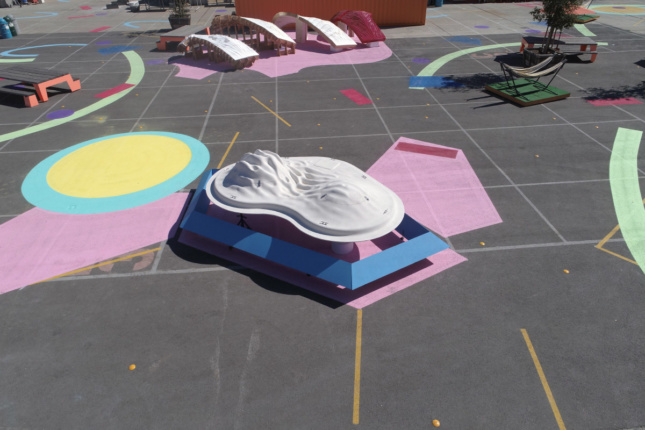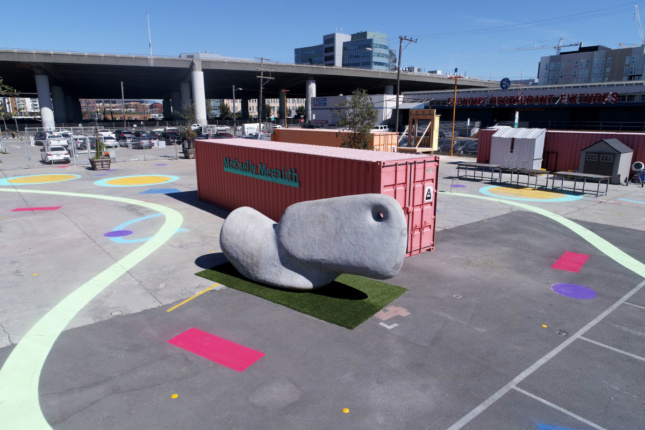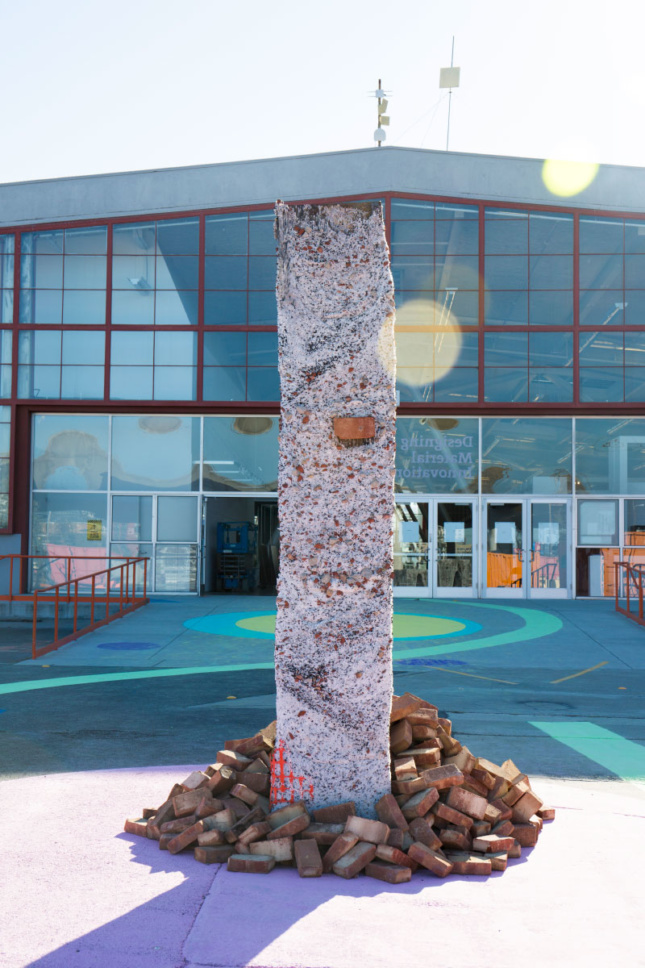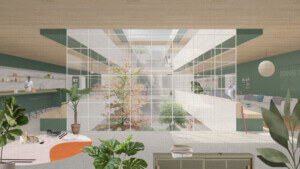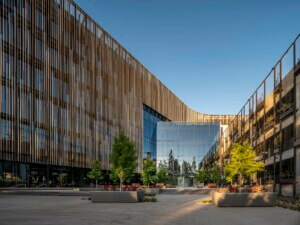The Designing Material Innovation exhibition—co-presented by the California College of the Arts (CCA) and the University of Michigan Taubman College of Architecture and Urban Planning at the CCA campus in San Francisco—aims to utilize contemporary architectural research in an effort to envision potential futures for the school’s backlot.
The exhibition consists of five experimental architectural pavilions built to test new conceptual approaches in the realms of materiality, fabrication, and design. The pavilions, crafted with industry and academic partners, also attempt to articulate new ways of working outdoors in an effort to help guide designs for a forthcoming campus expansion by Studio Gang. Designs for the expansion are still in the works, but the scheme is expected to rely on a network of socially-driven outdoor workspaces and venues—Designing Material Innovation will act as a pop-up of sorts, testing the limits of what is possible outdoors at the CCA.
The exhibition was curated by Jonathan Massey—the current dean at Taubman College and recent dean of architecture at CCA—who brought together APTUM Architecture, MATSYS, the CCA Digital Craft Lab, T+E+A+M, and Matter Design for the show. Exhibition design for the showcase came from Oakland, California–based Endemic Architecture, who created a “confetti urbanism” installation for the site that whimsically reworks existing furnishings into a playscape that hosts the experimental pavilions, as well as give students a place to fabricate their projects.
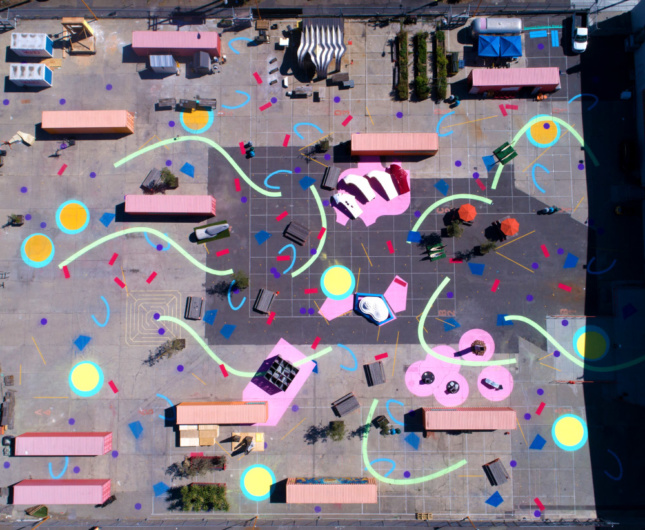
“Designing Material Innovation shows how designers and industry leaders partner to achieve great things, whether that is making concrete structures light and delicate, promoting ecological diversity, or repurposing waste,” Massey said.
APTUM Architecture collaborated with Mexican building materials company CEMEX to devise new methods of testing fiber-reinforced methods to pursue extremely thin concrete shell structures.
The ten-foot-by-ten-foot pavilion is made of interlocking concrete arches that are only one-third of an inch thick. A second vaulted pavilion was made by Oakland-based MATSYS with help from the CCA Digital Craft Lab. The complexly curved shell structure was robotically milled from foam waste and is coated in synthetic resin. The Buoyant Ecologies Float Lab by the CCA Digital Craft Lab and Kreysler & Associates comprises a “floating composite shell structure” according to the exhibition website, and was fabricated using fiber-reinforced polymers. T+E+A+M and University of Michigan came together to generate a “new architectural order” made from “plasticglomerate,” an amalgamation of rocks and plastic waste cast into a grouped cluster of columns. The final team—Matter Design and Massachusetts Institute of Technology—fabricated a 16-foot-tall, 2,000-pound glass fiber reinforced concrete sculpture that pivots and moves freely despite its hefty appearance.
Taken together, the installations offer not just a glimpse into the future of material experimentation, but pique interest in Studio Gang’s forthcoming additions, as well.






